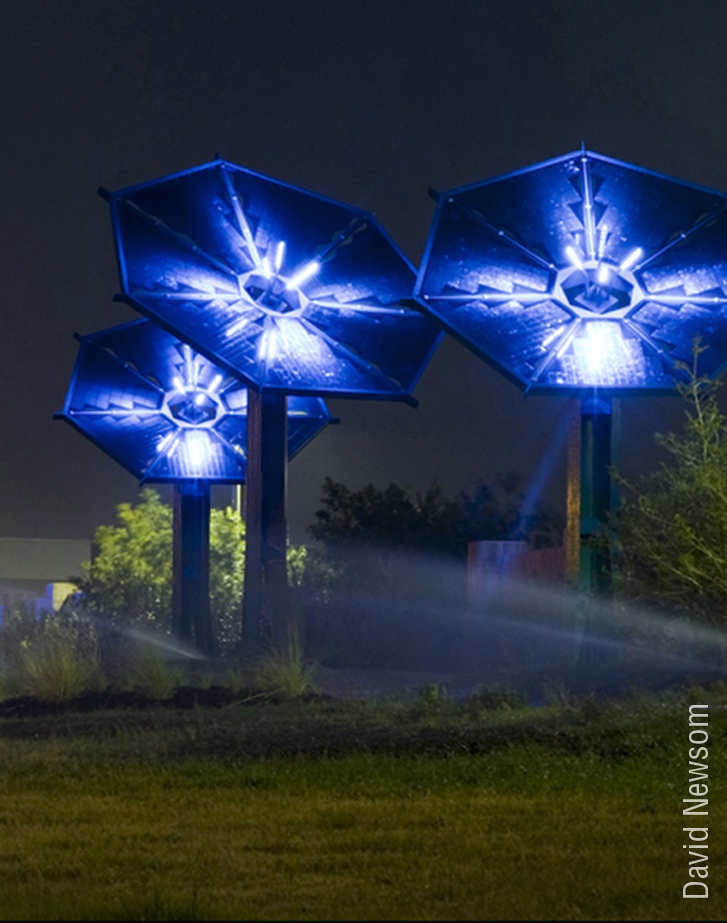The esteemed Smithsonian Craft Show returns to the National Building Museum on May 1-5, 2024. Widely regarded as the most prestigious juried show and sale of American fine craft, the Smithsonian Craft Show, now in its 42d year, will feature the work of 120 artists. Twenty-seven of the exhibitors applied for the Honoring the Future® Sustainability Award. The award, which comes with a $1,000 prize, continues a tradition begun in 2015 to honor pioneering craft artists who point the way to a more sustainable future.
Jane Milosch, an internationally recognized authority on the intersection of art, craft, design, and technology, is serving as judge.
The theme of this year’s show is “Creating Joy” – and the artists applying for the Honoring the Future® Sustainability Award offer a host of creative, joy-filled approaches to attaining sustainability:
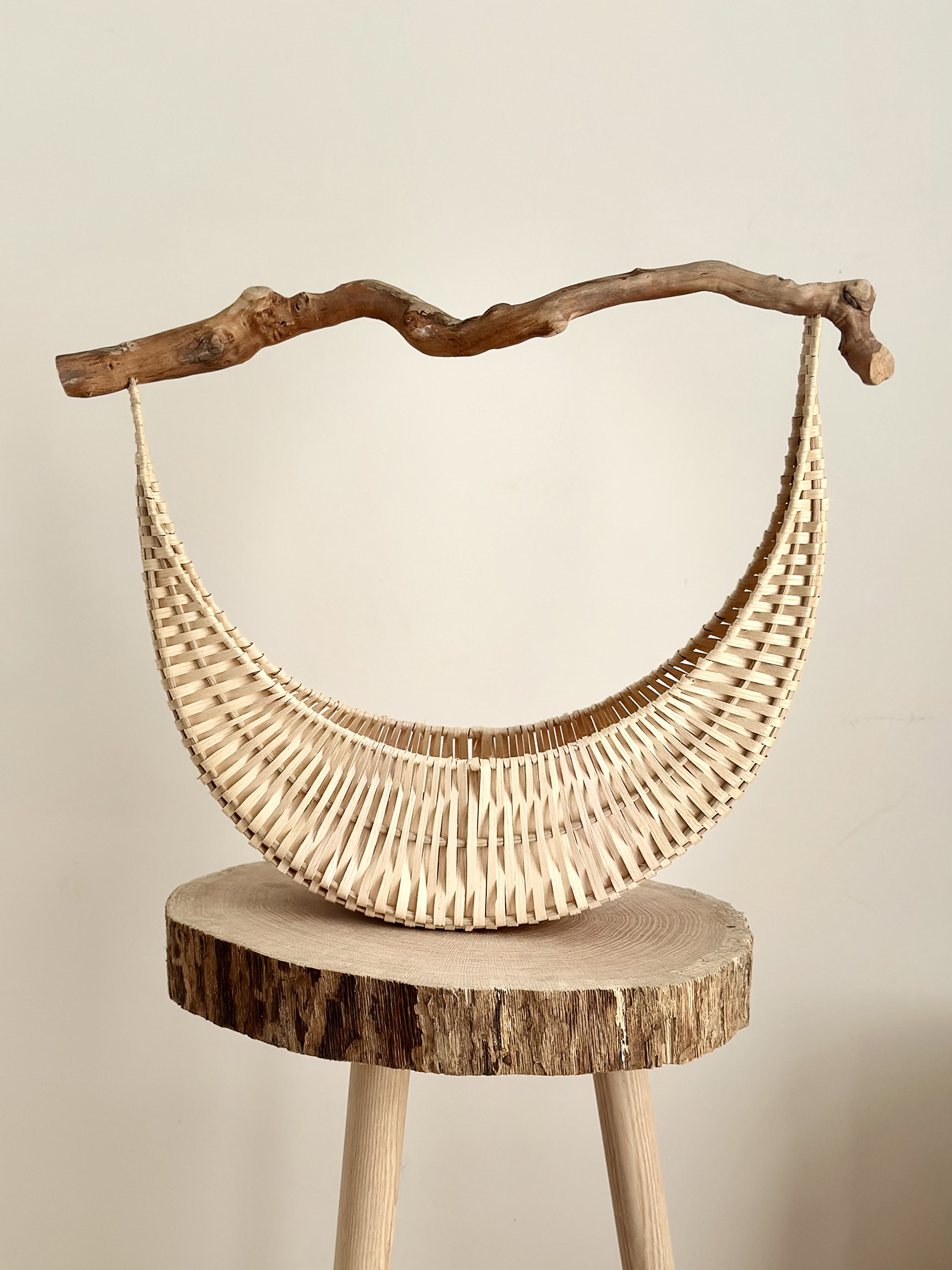
Amy Krone – sustainably harvested white oak/salvaged tree roots
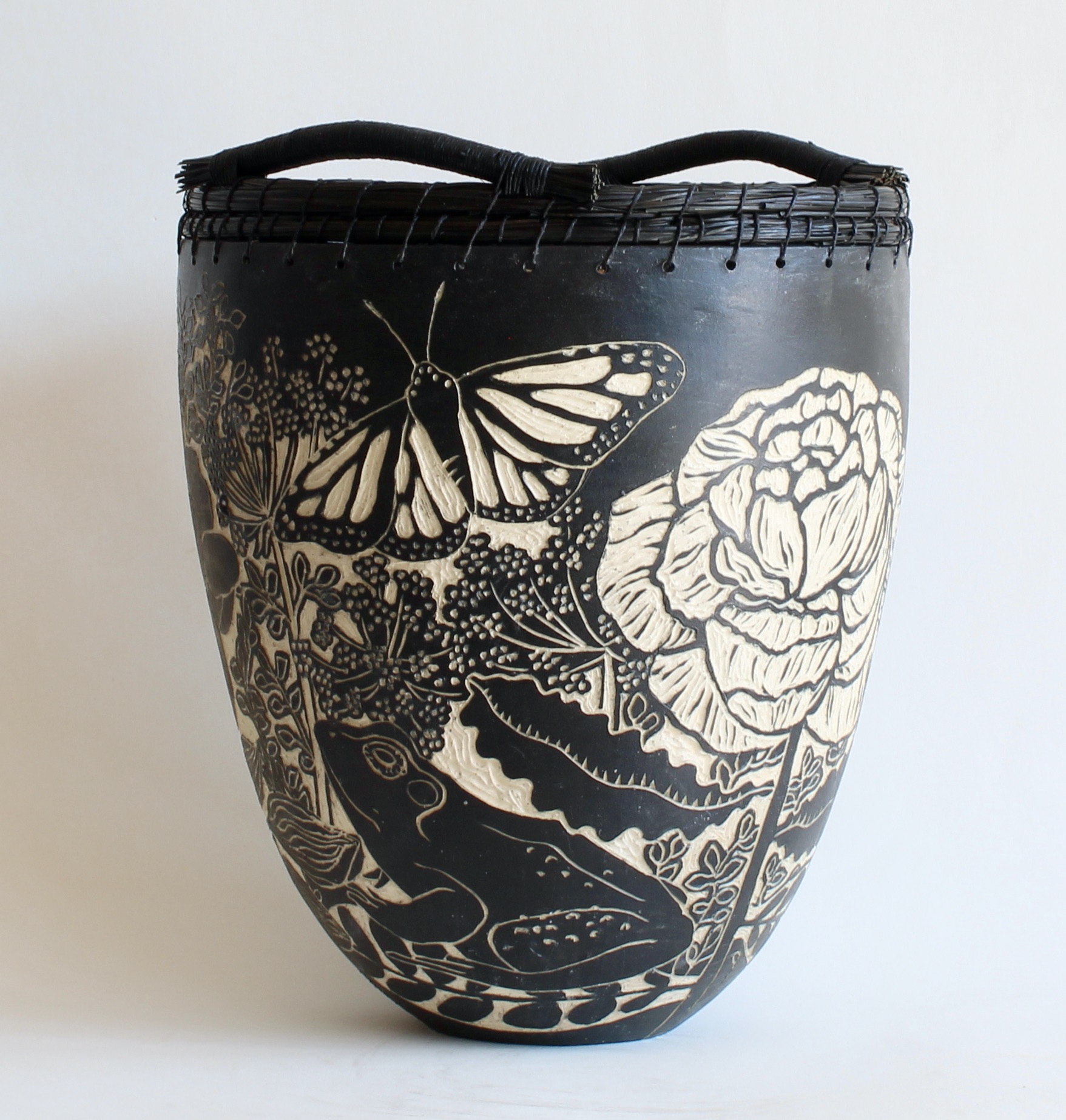

Lucrezia Bieler – paper cuttings honoring nature’s fragility
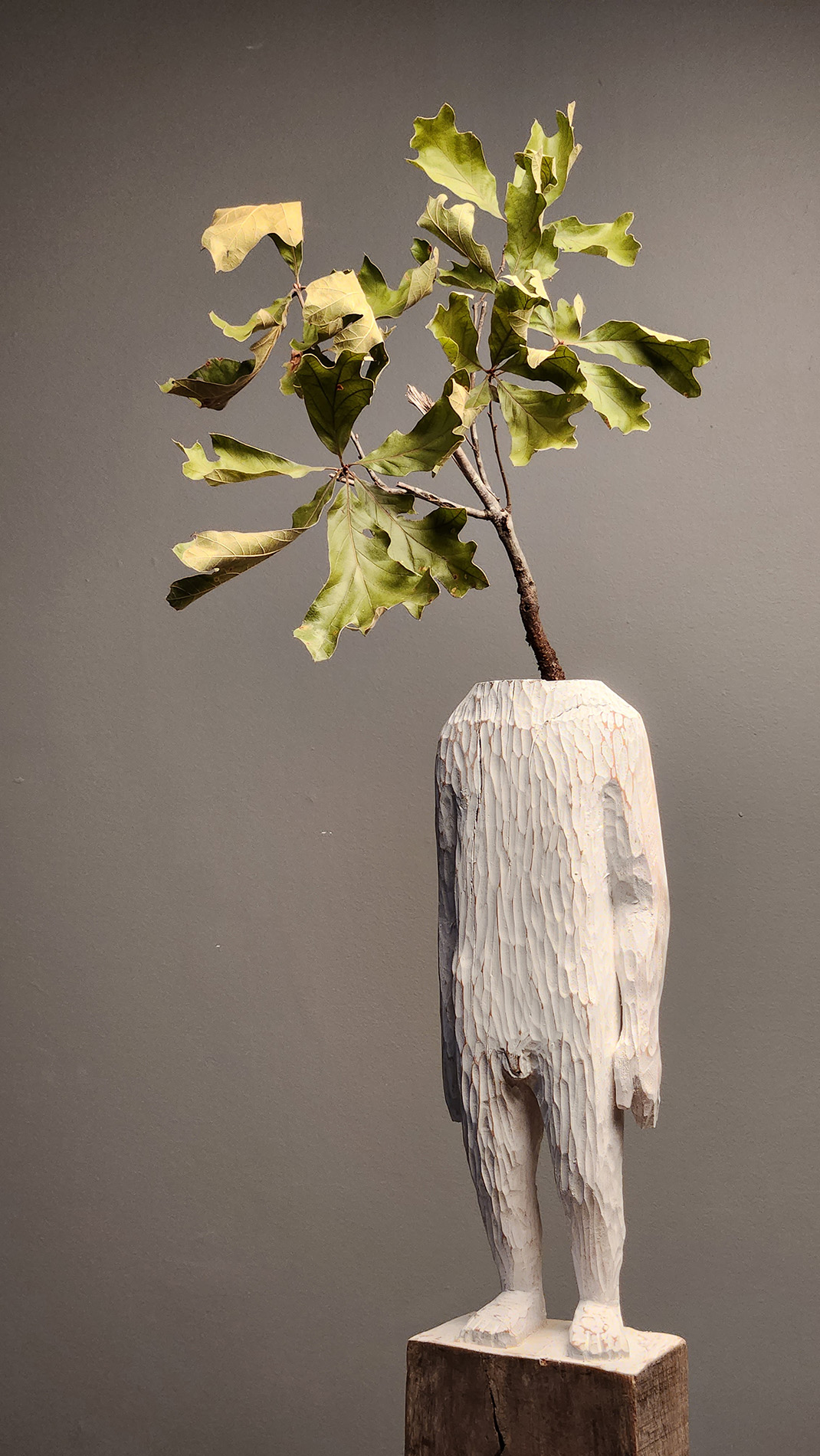
Christopher B. Wagner – reclaimed lumber/respect for trees
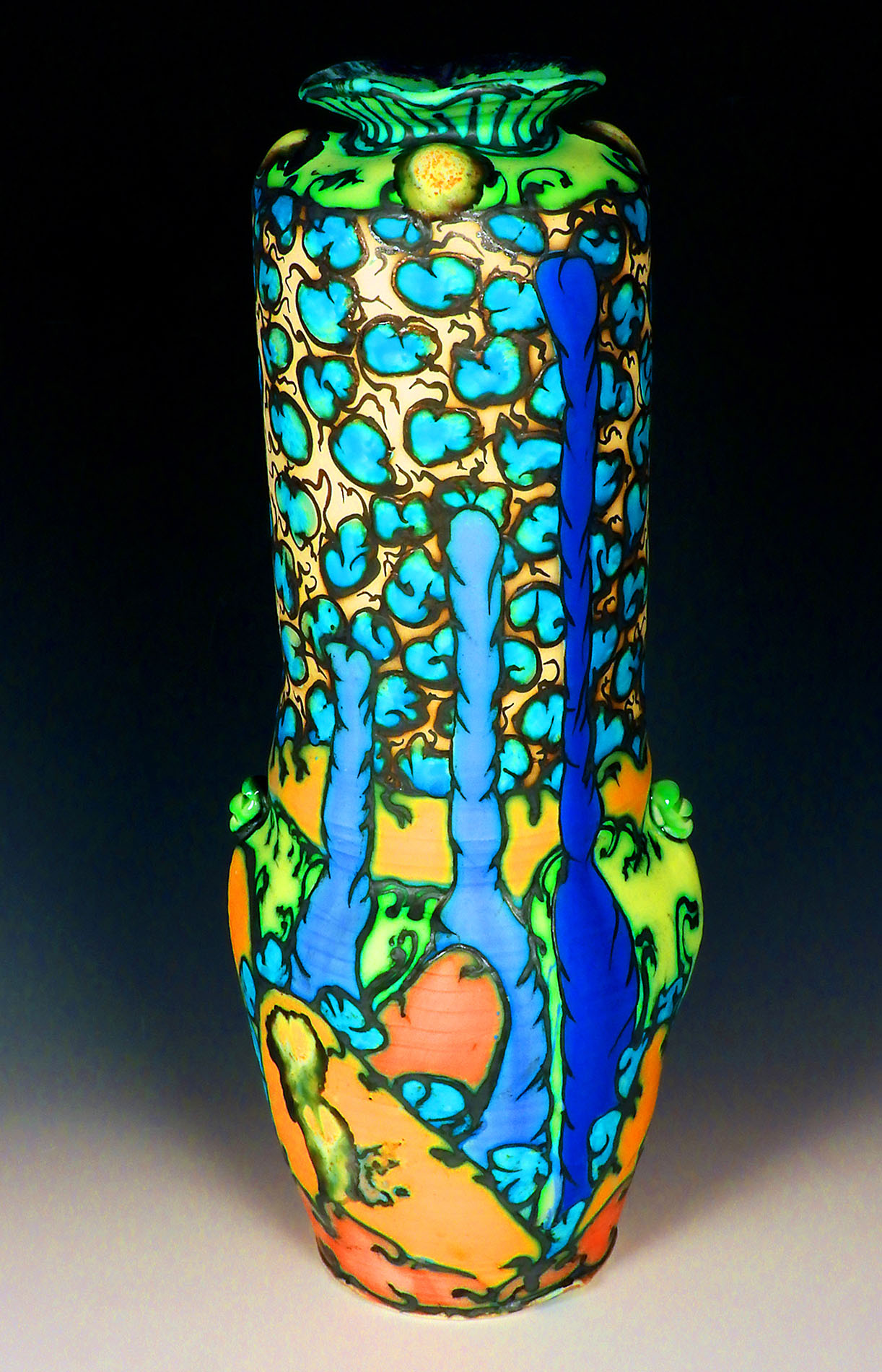
George Pearlman – zero waste ceramics/solar-powered studio
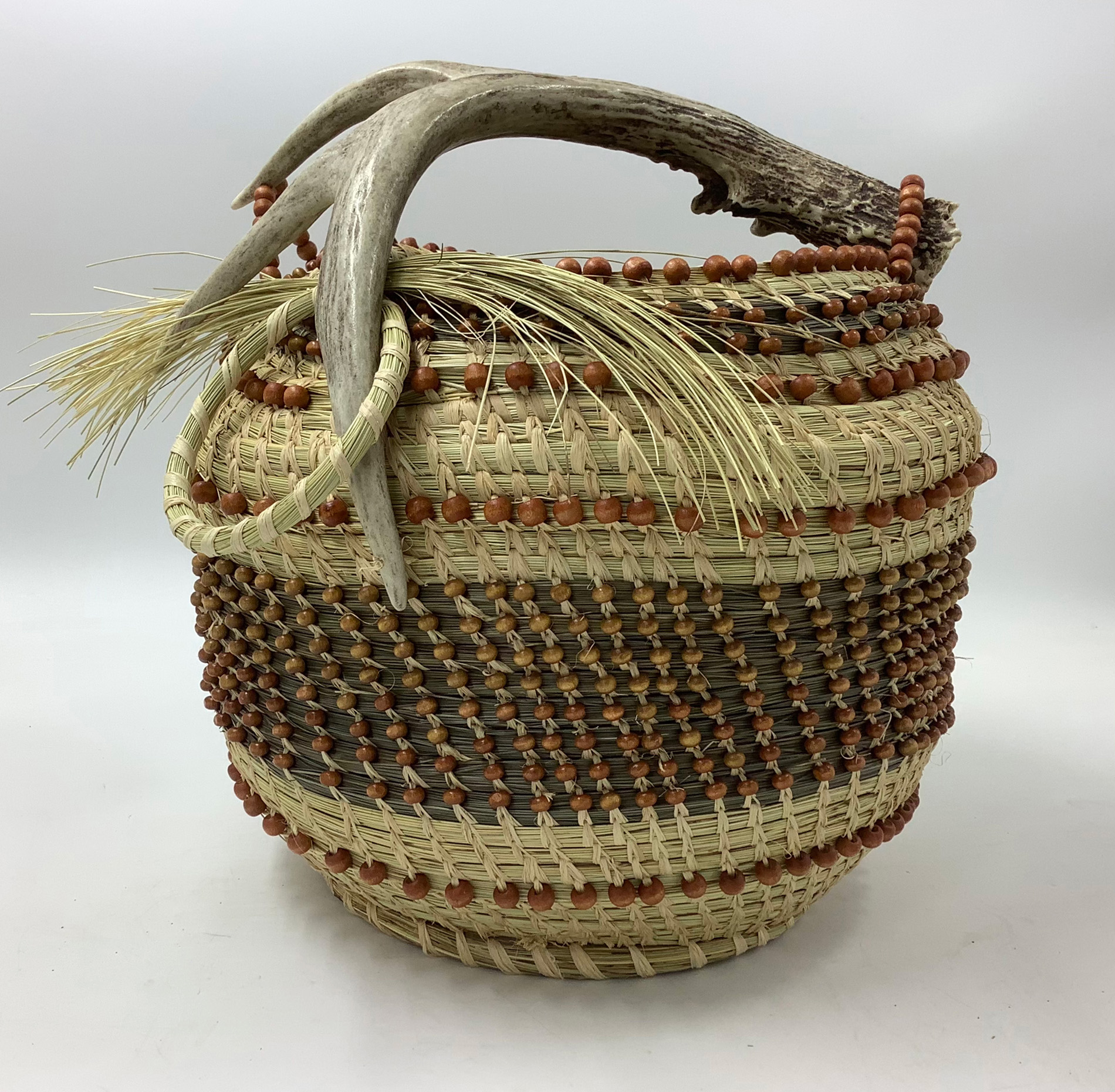
Georgette Wright Sanders – natural sweetgrass, resource protection

Holly Anne Mitchell – recycled paper
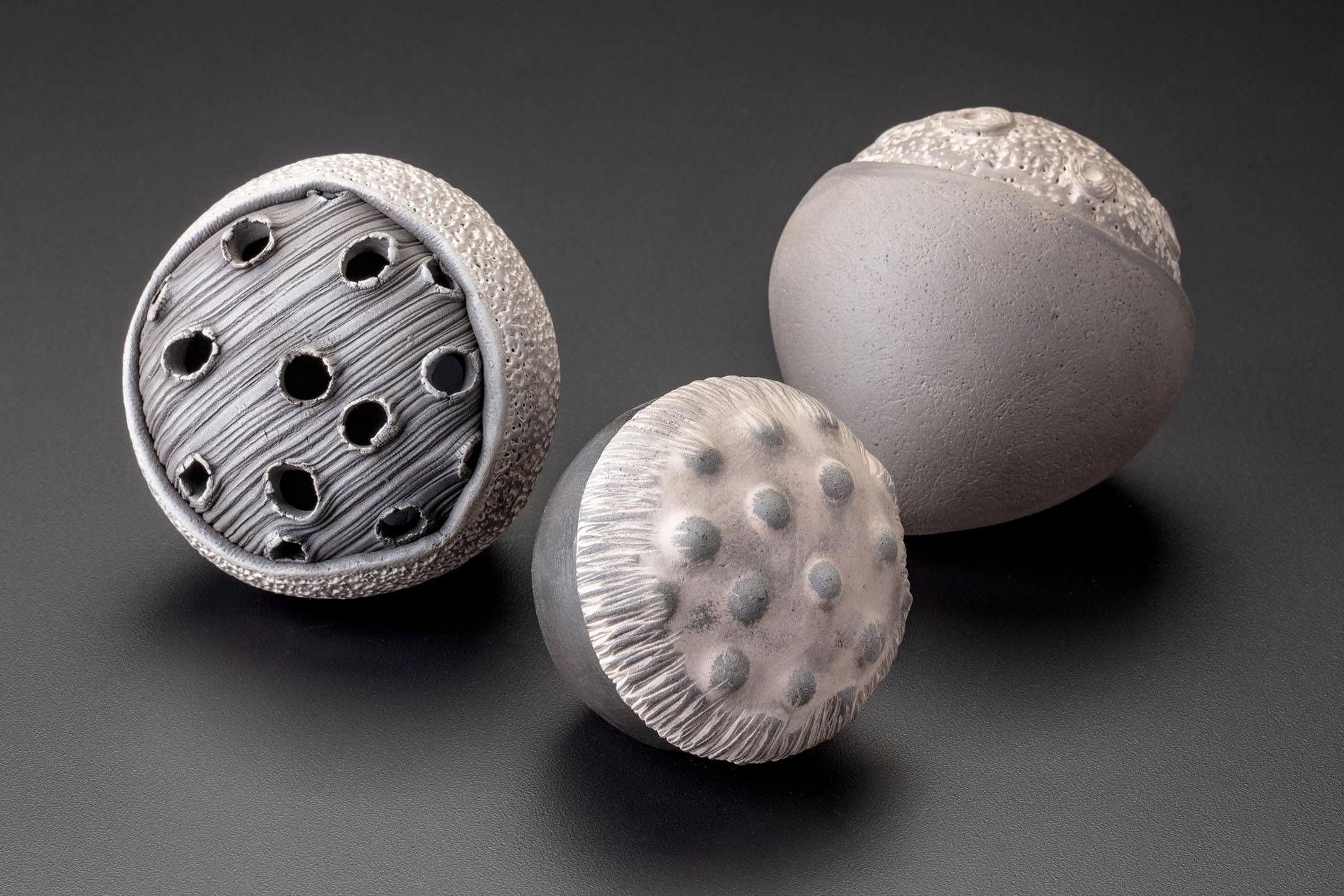
Paula Shalan – Hand-built/local clay/recycled wood shavings/celebrating seed diversity
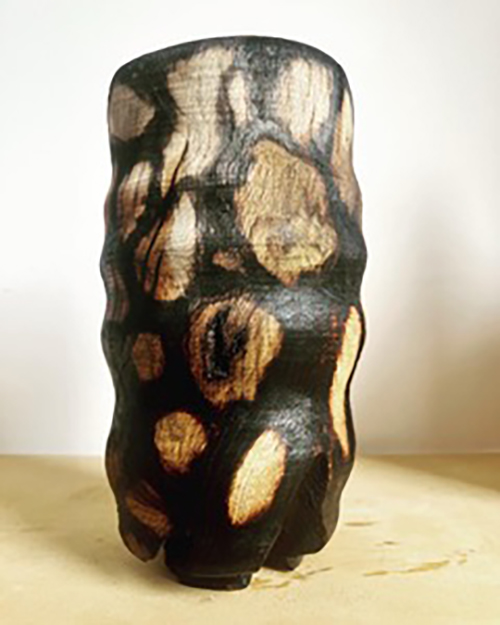
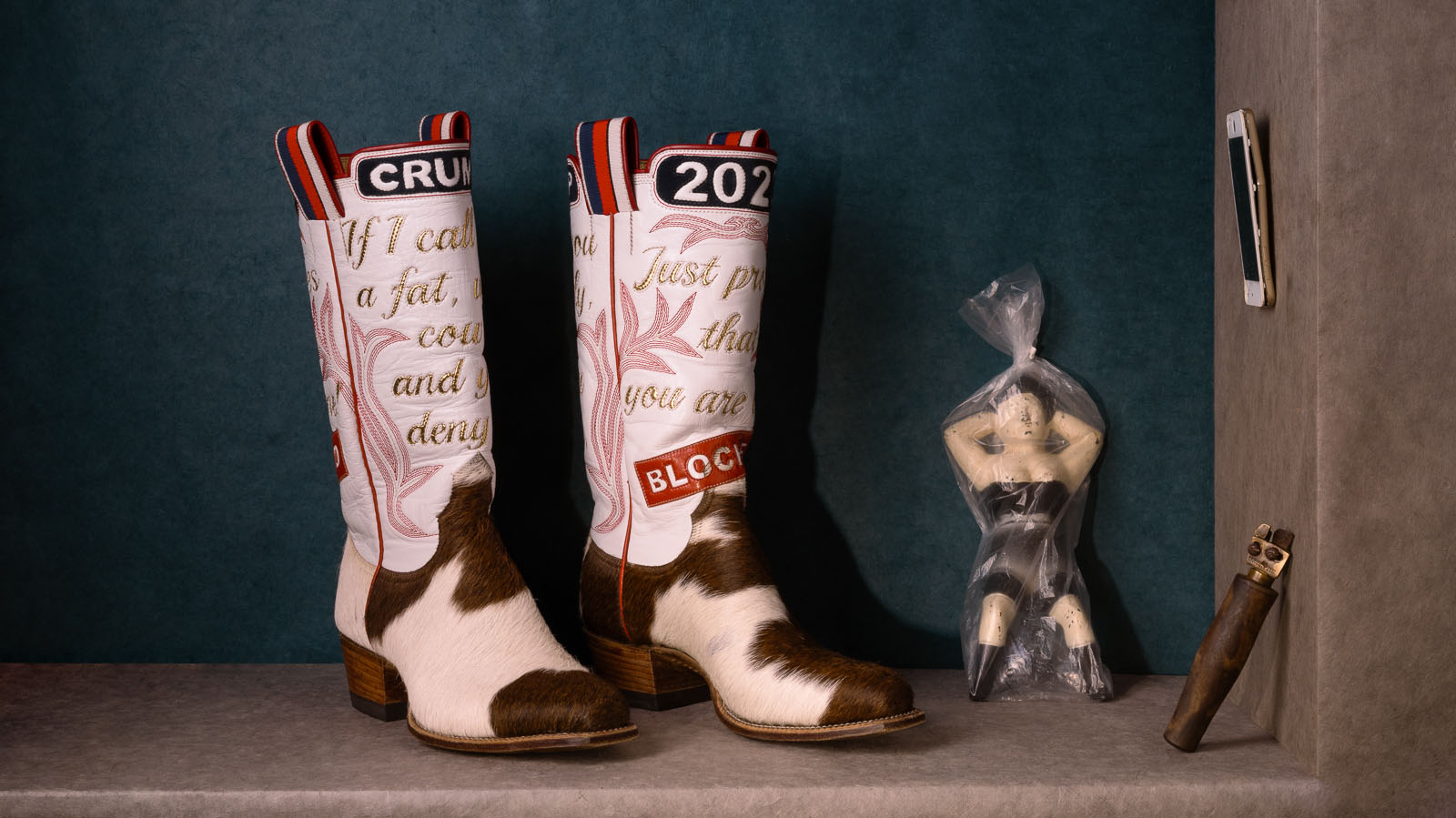
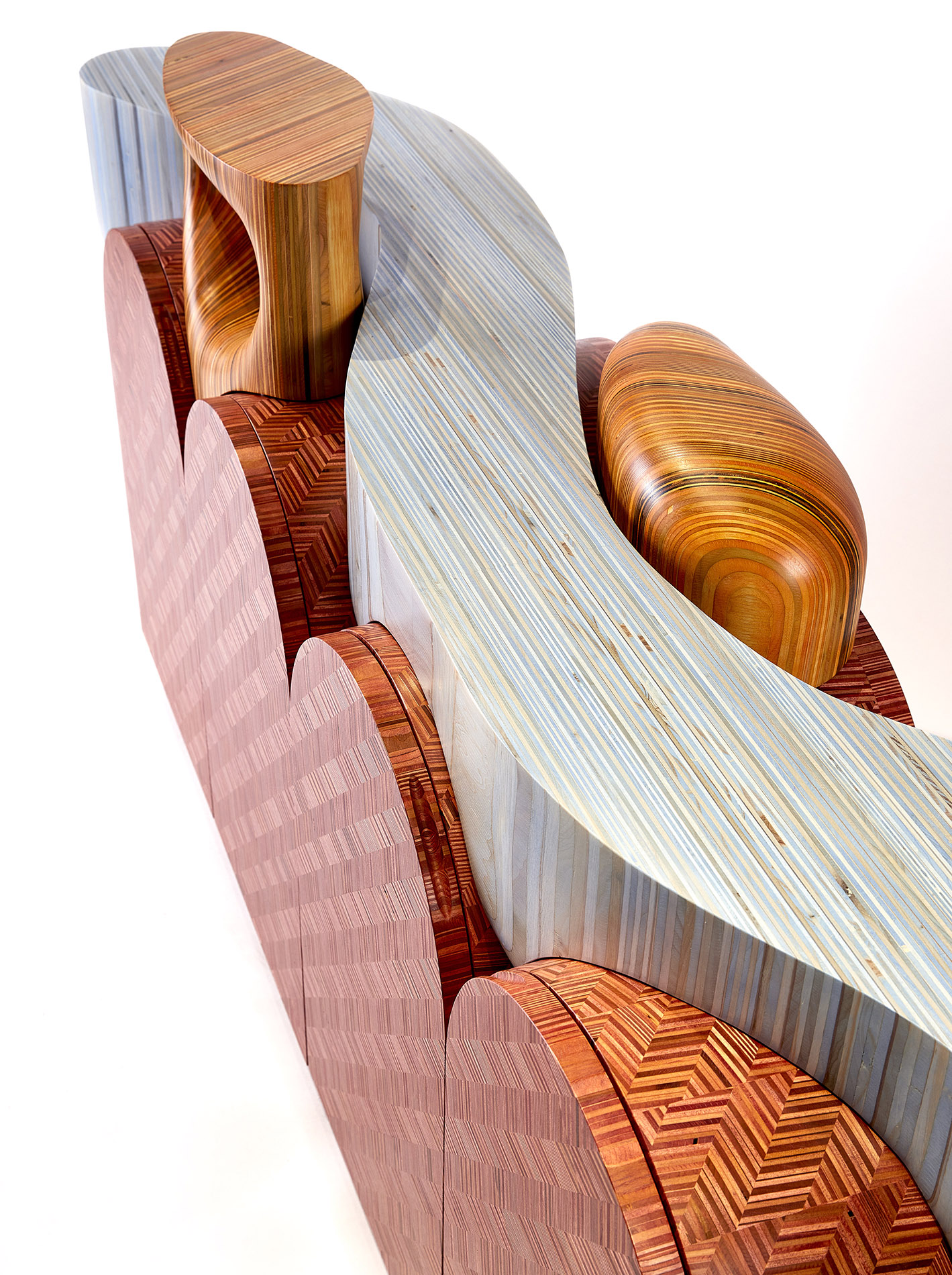
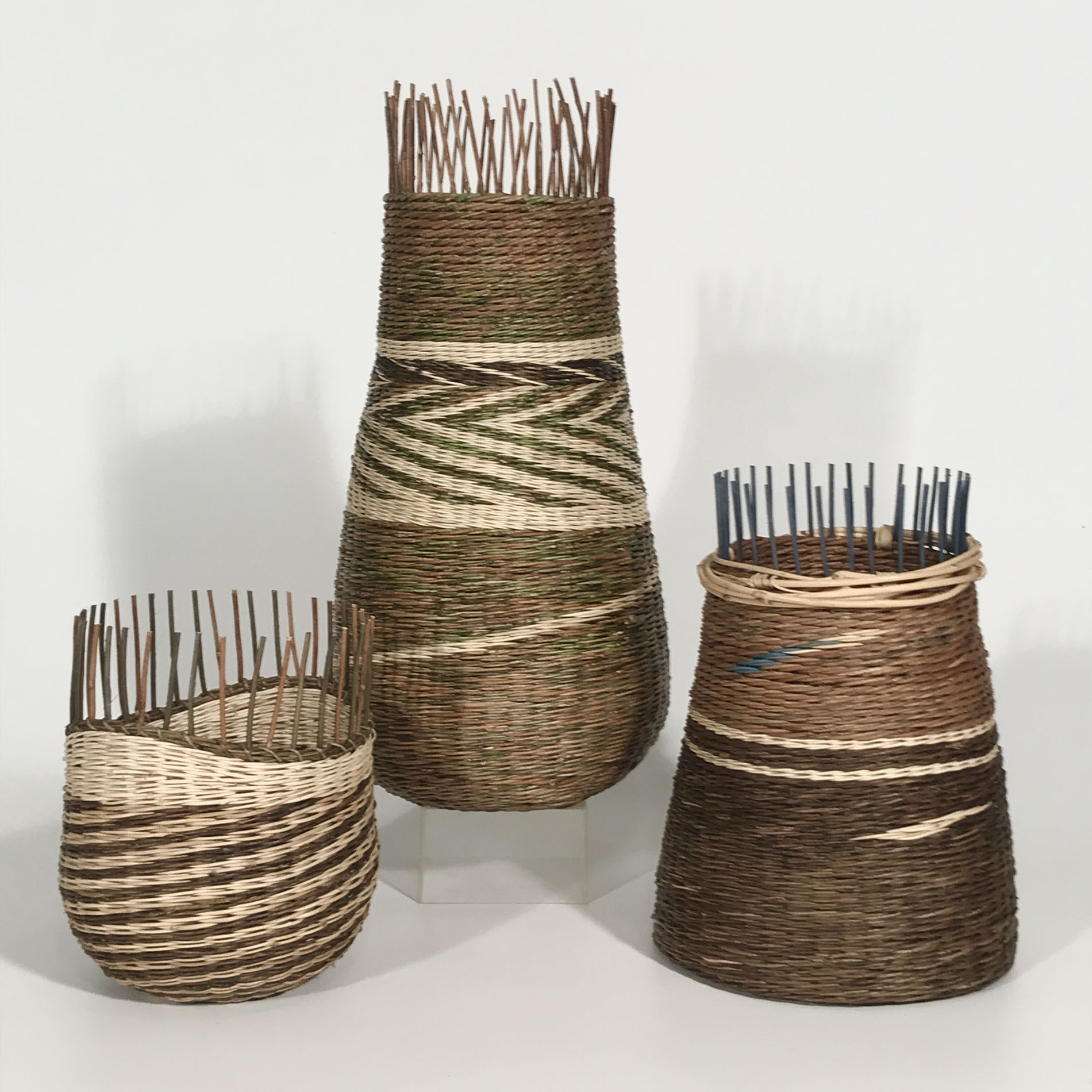
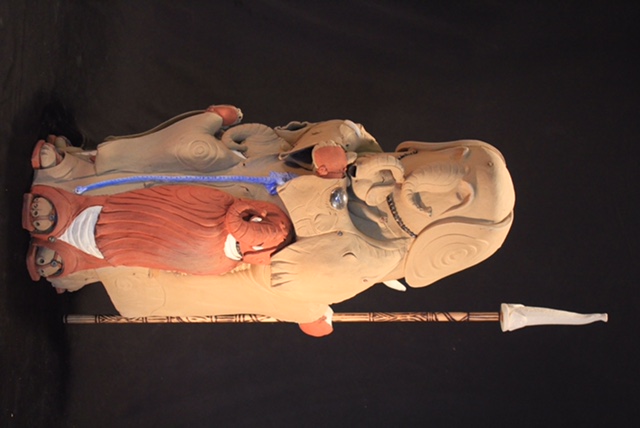
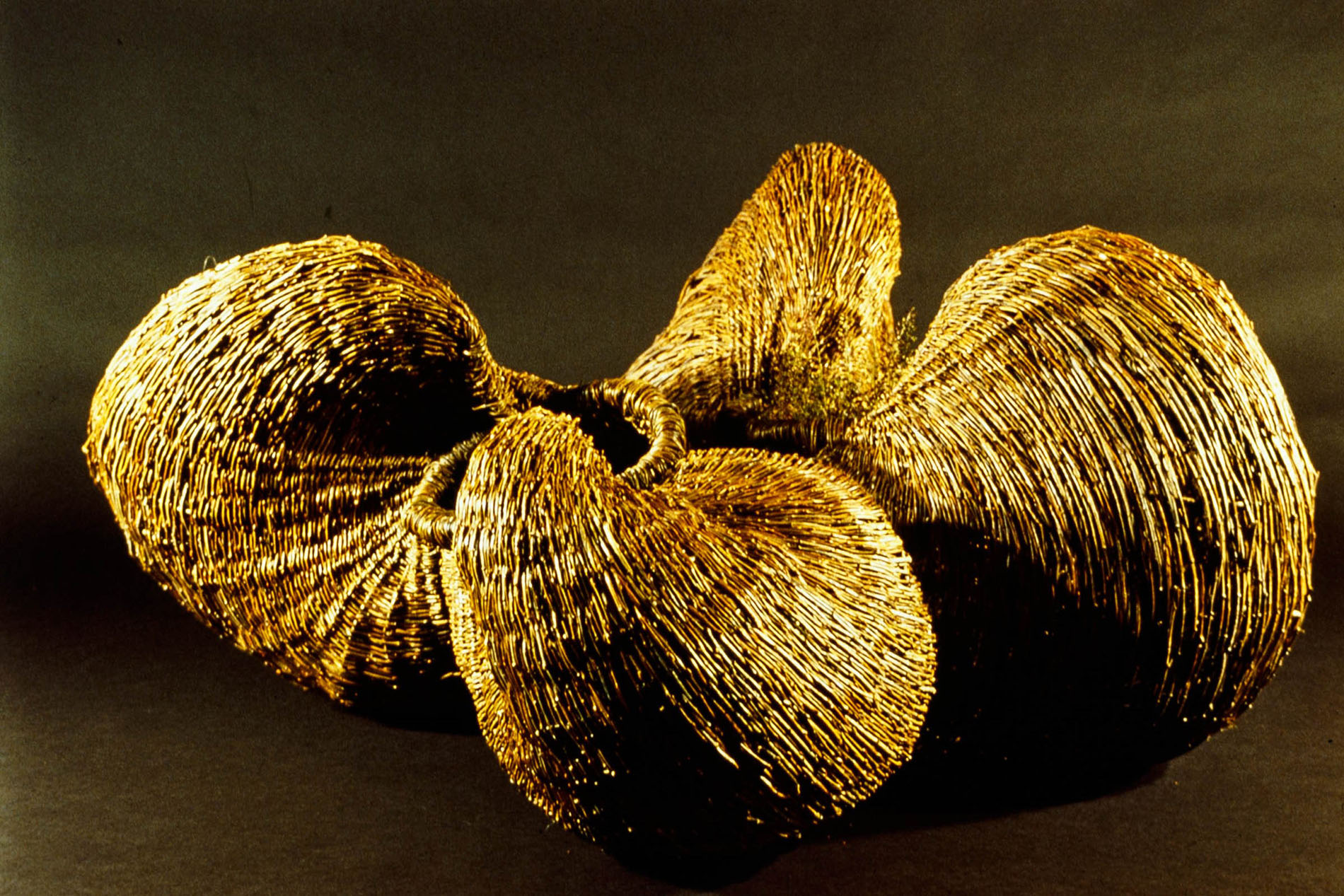
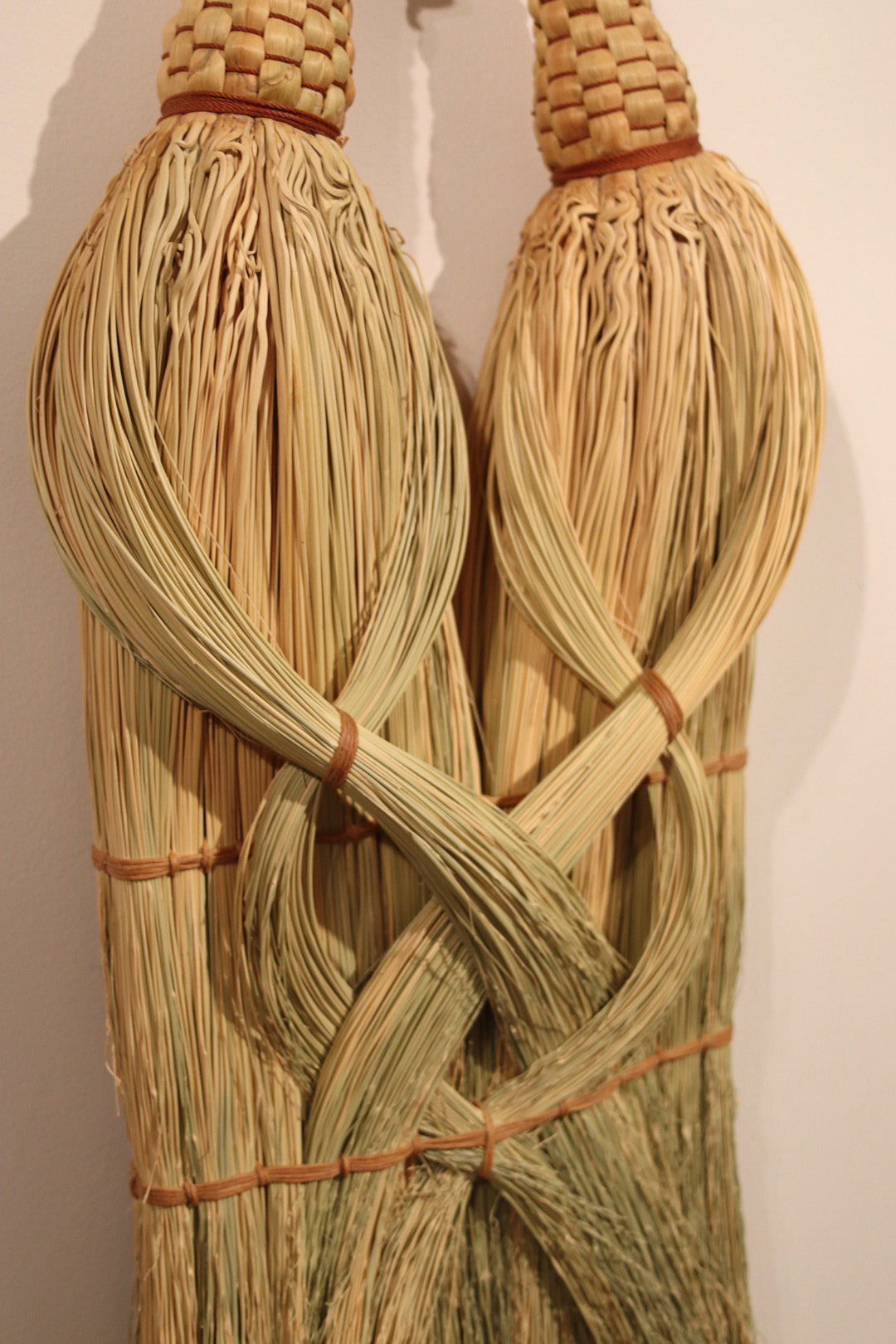
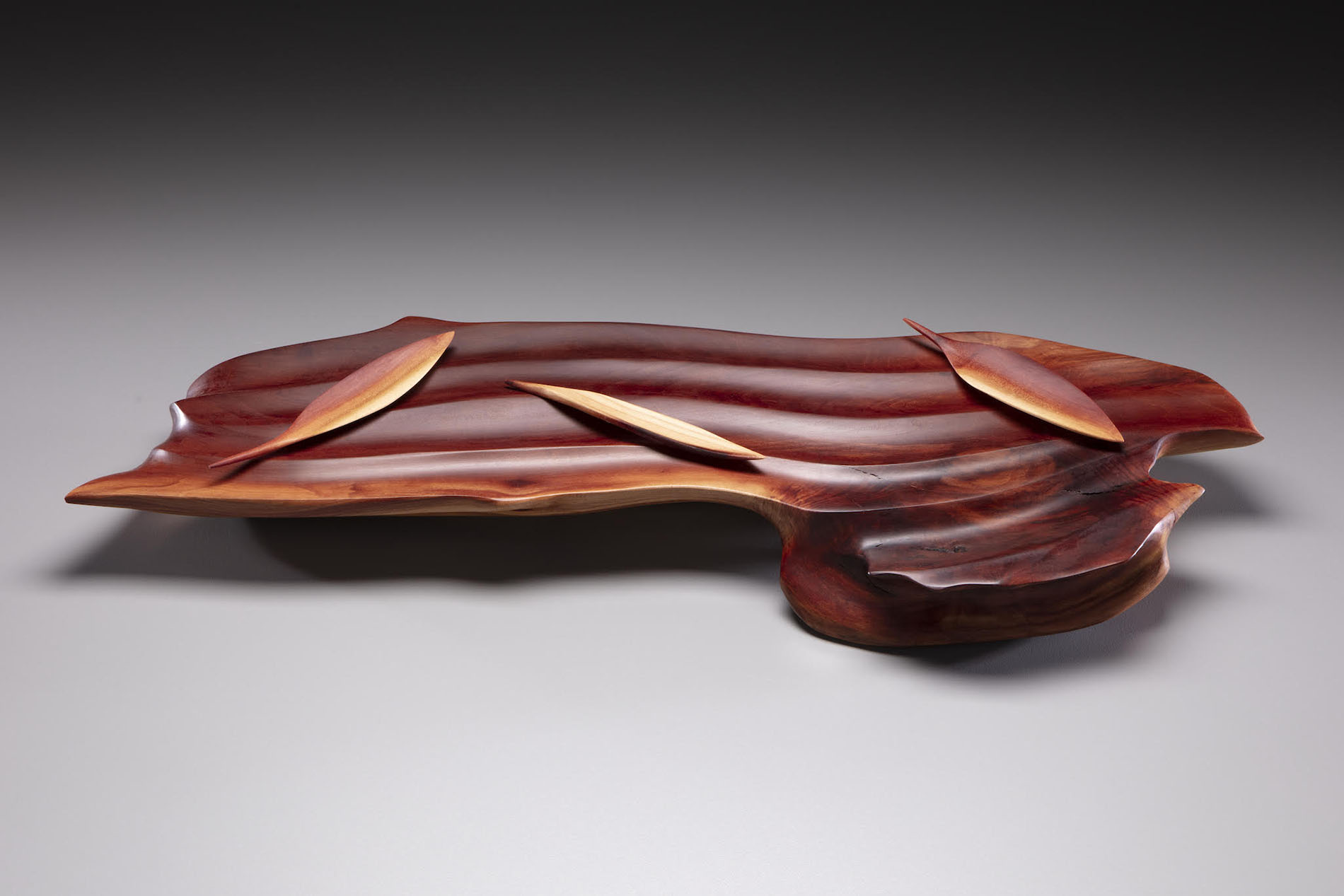
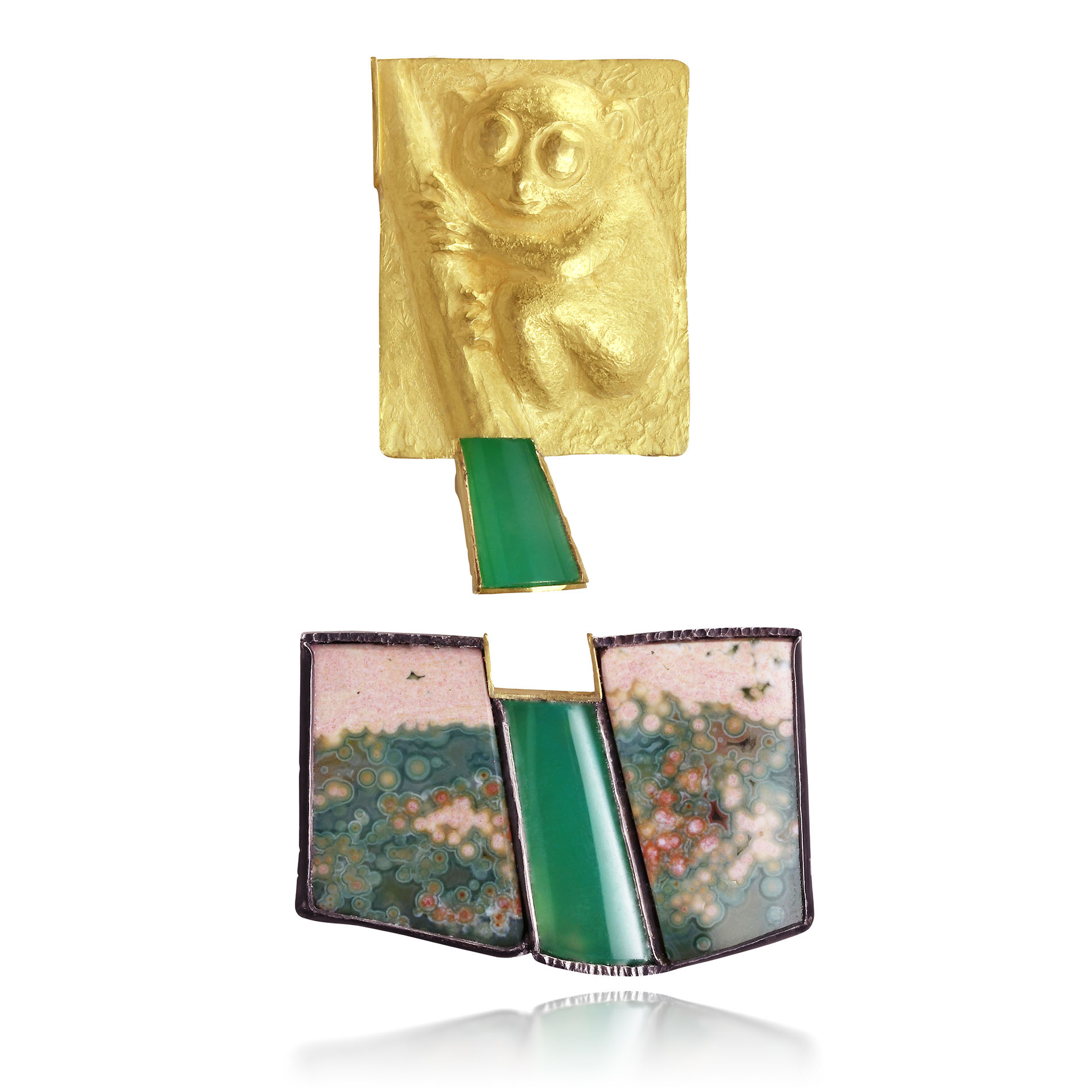
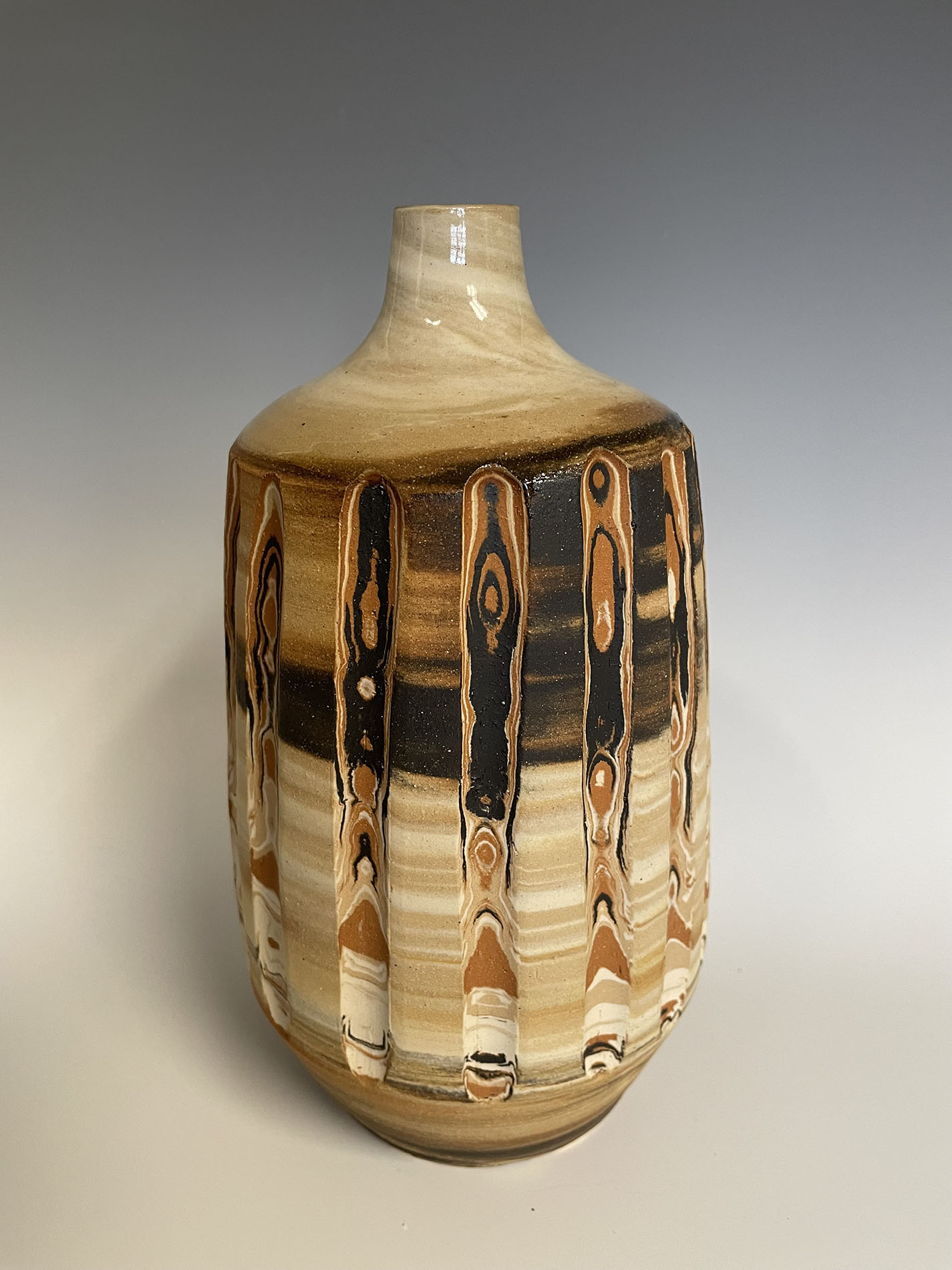
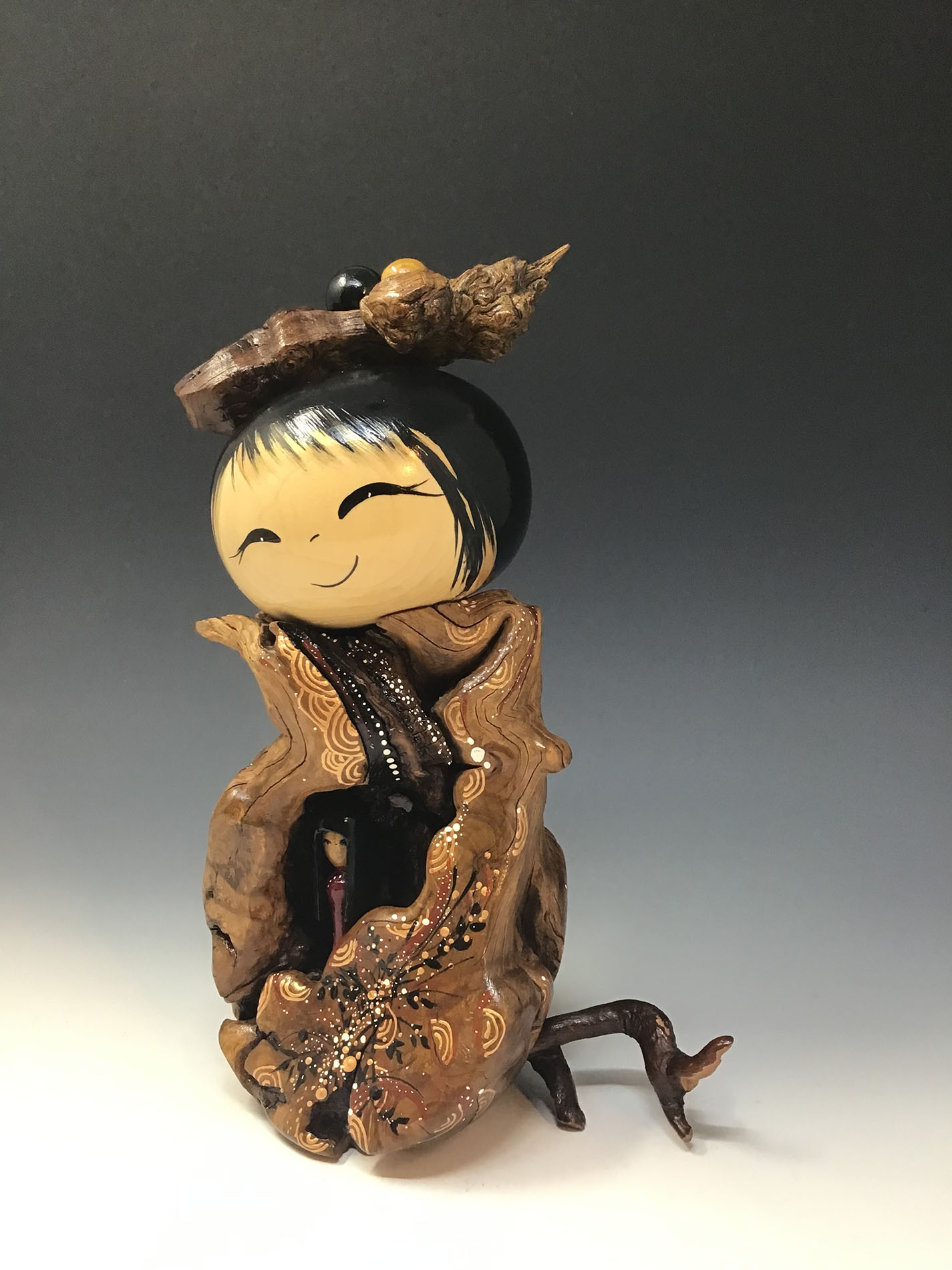
Lisa & Jacob Hodsdon – reclaimed, recycled, repurposed wood/showcasing tree diversity
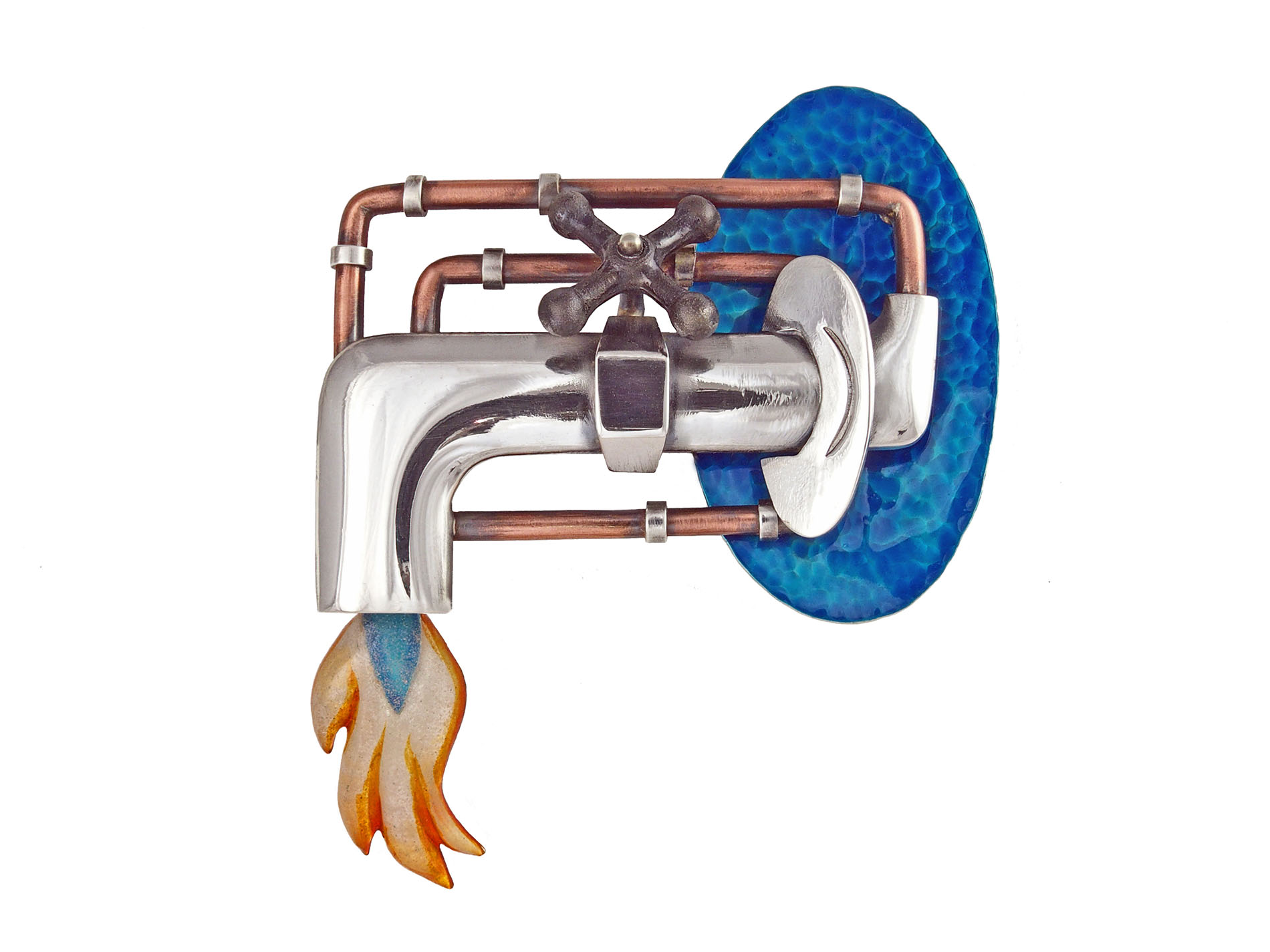
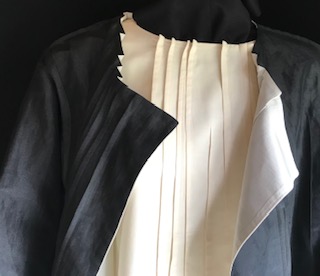
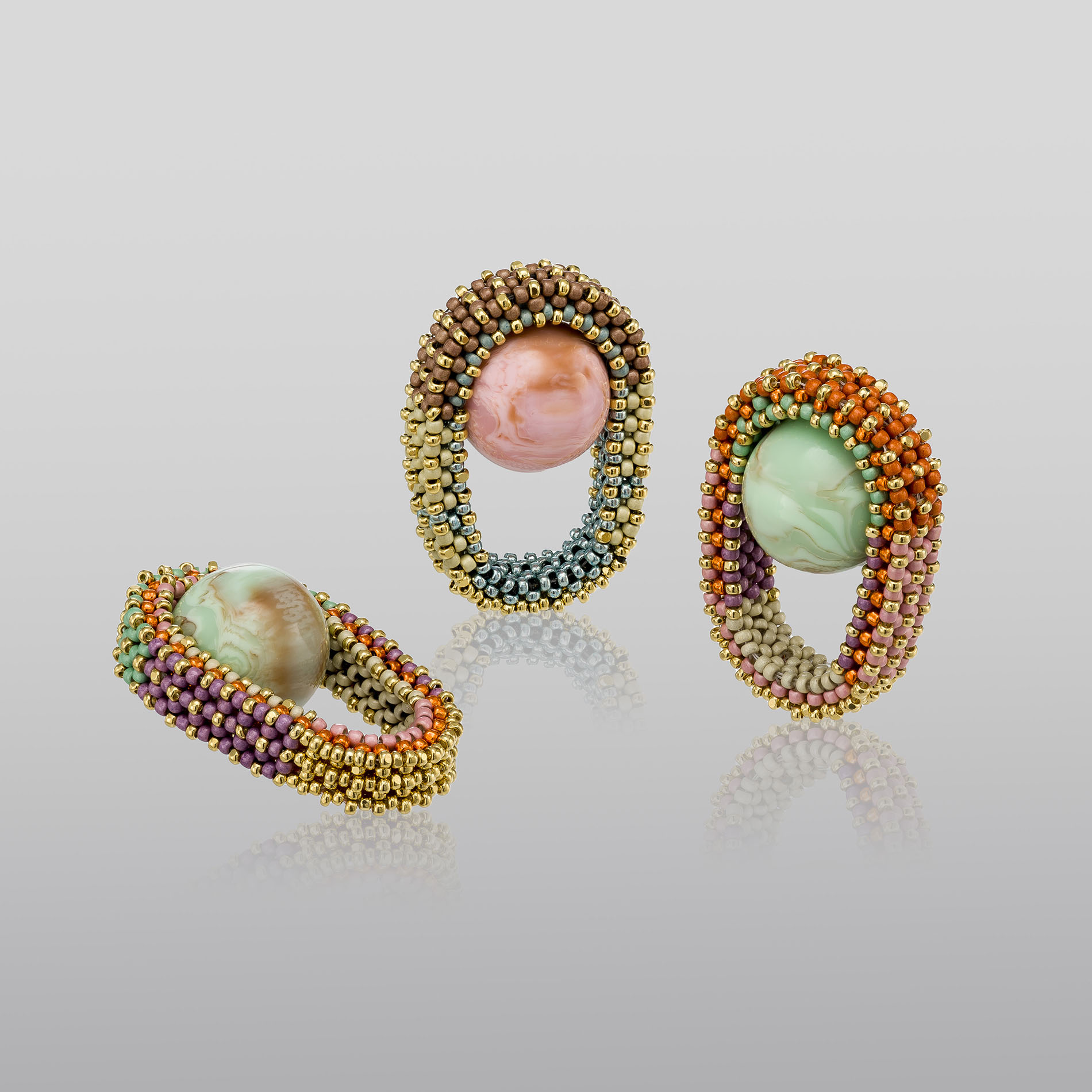
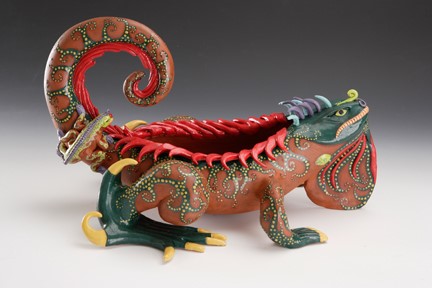
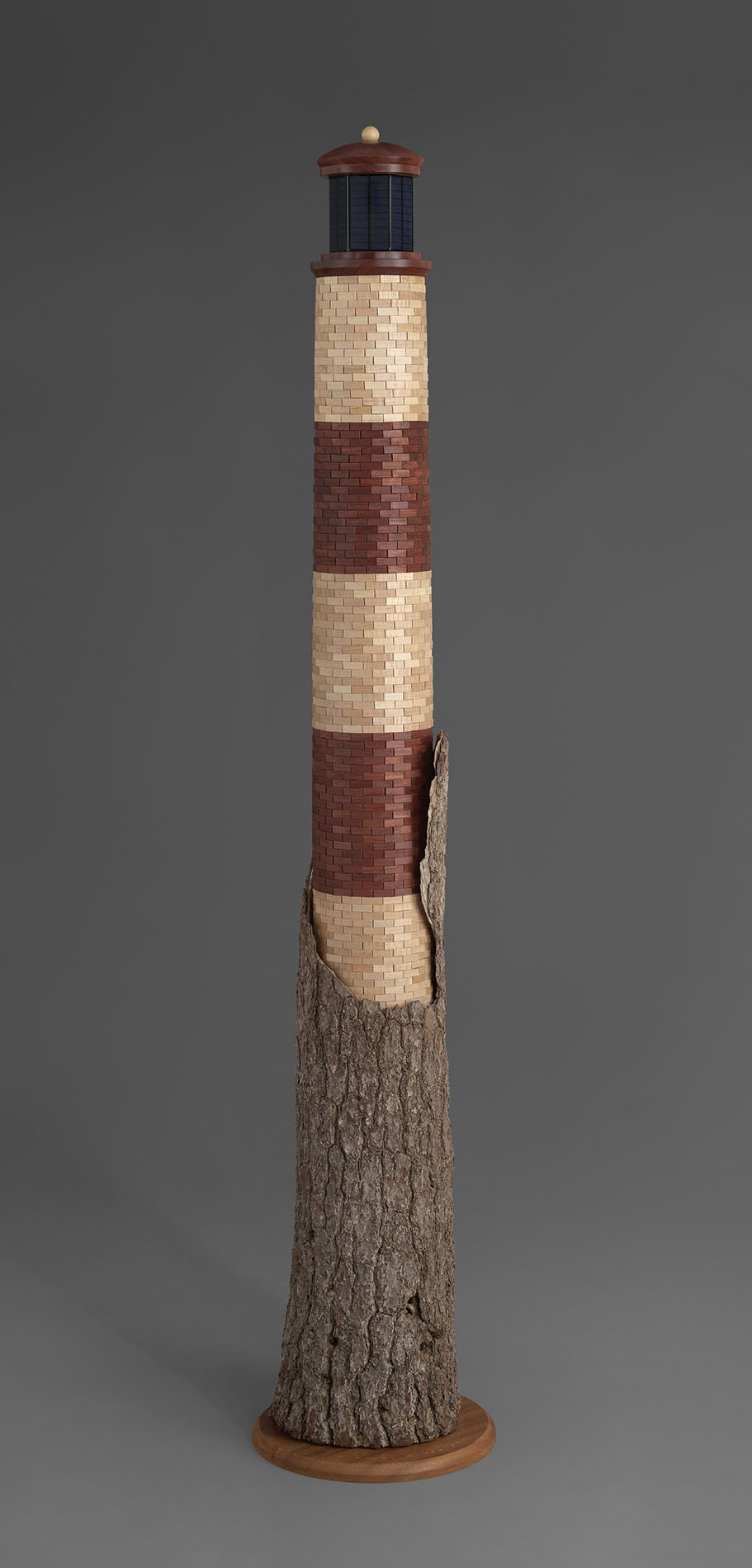
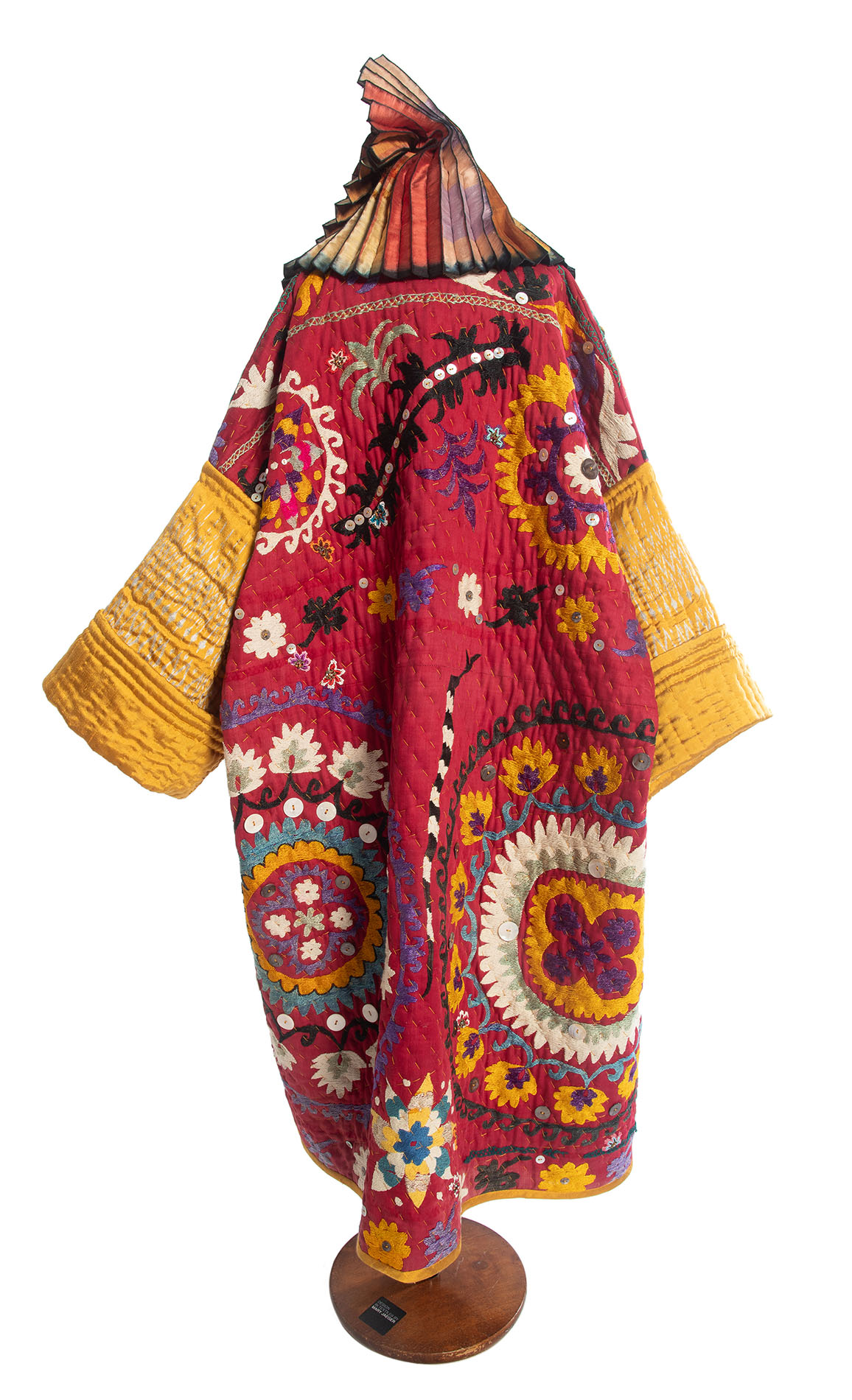
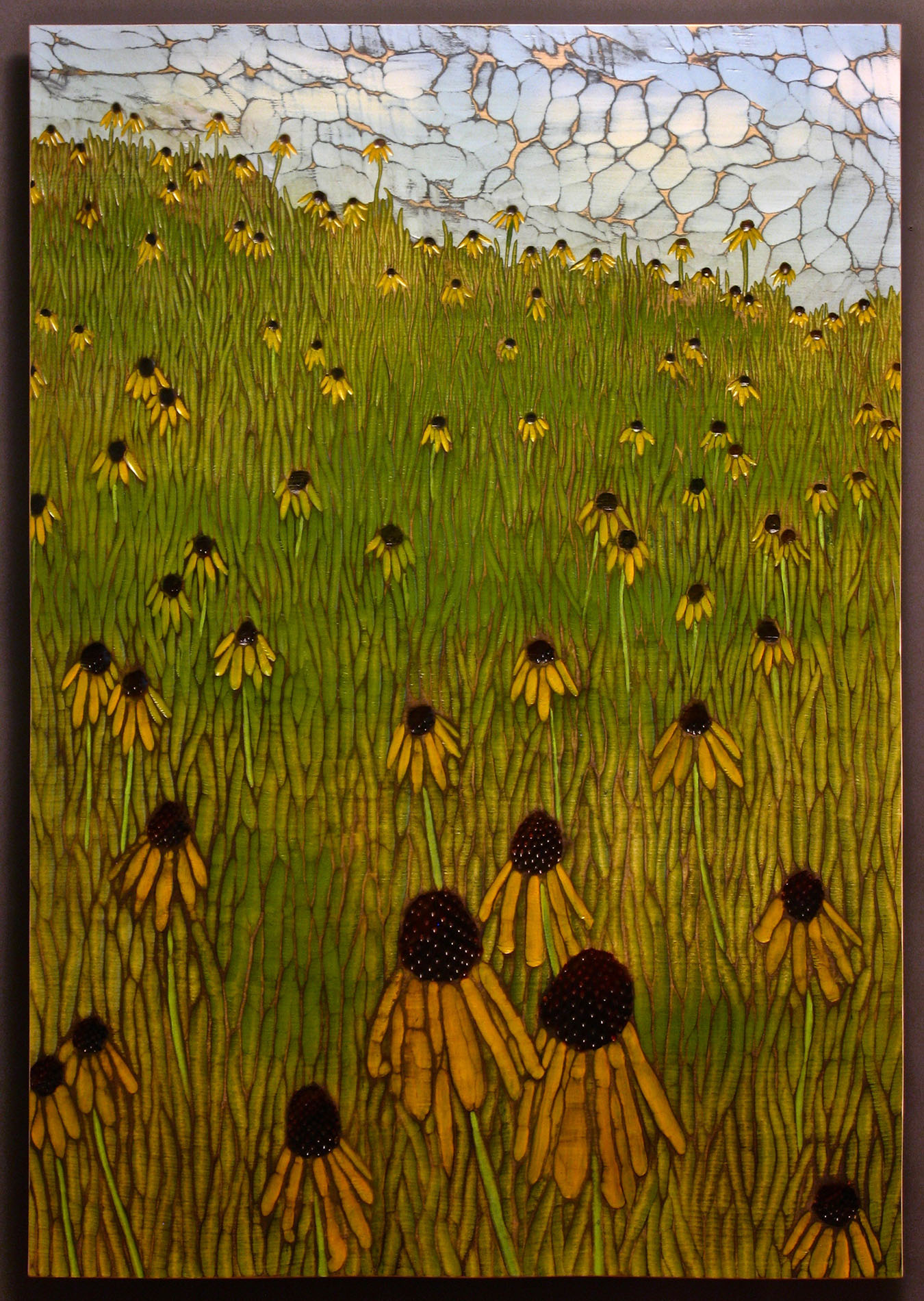
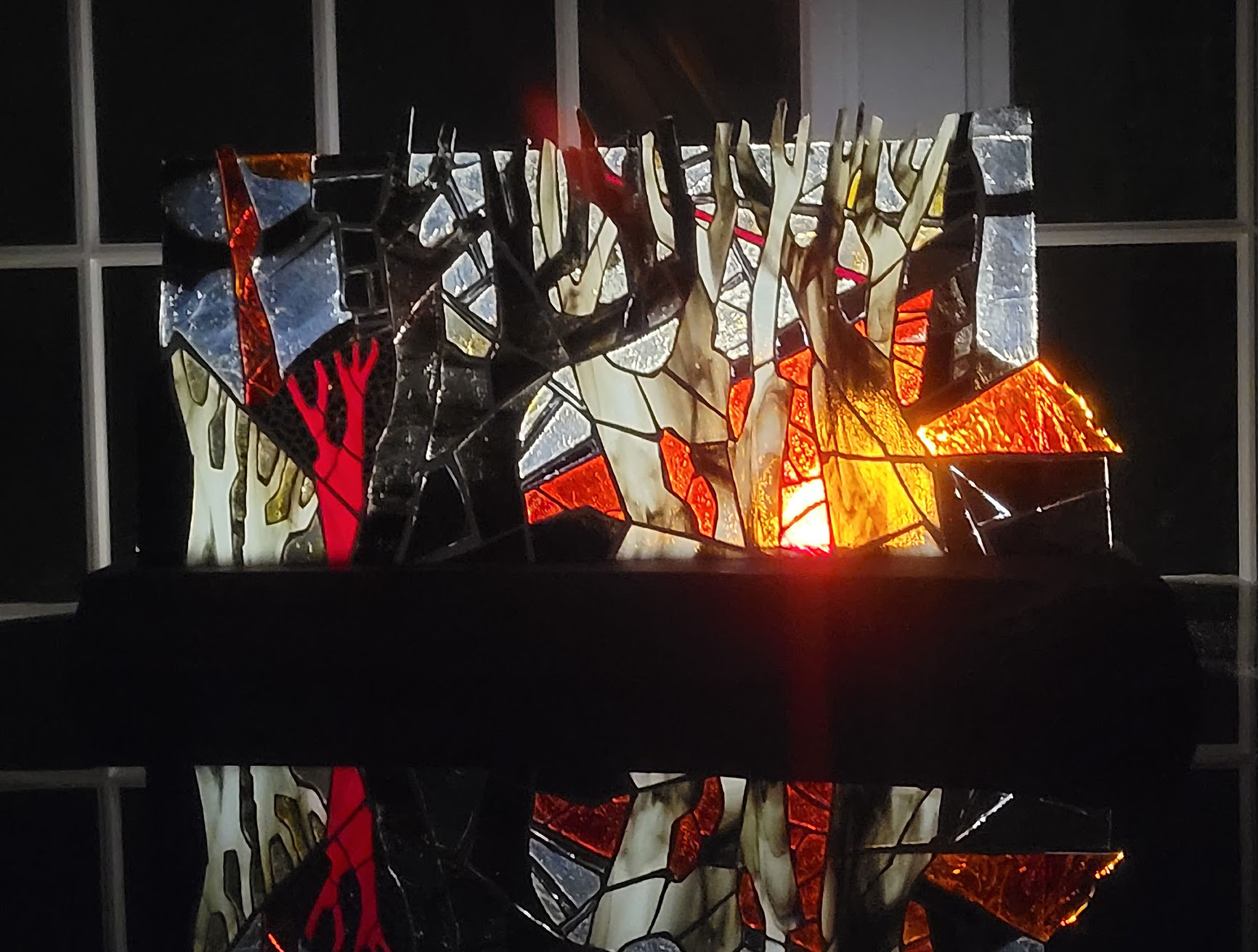
Olga Gobernik Kon – attention to the environmental damage of human conflict
Rejoicing in nature’s wonders:
- Paper is a fragile medium – and in Lucrezia Bieler’s talented hands, a metaphor for “the delicacy and fragility of nature itself.” Her intricate nature scenes, painstakingly cut from a single sheet of paper, symbolize the awe-inspiring interconnectedness of all species and the impact of every life form on others.
- The incised (sgraffito) images of birds, flowers, plants and insects on Carolyn Blazeck’s hand-built clay pots form “a lively, rhythmic composition” celebrating her delight in nature. Translating that bliss into art deepens her understanding and appreciation of nature and “fosters a sense of reverence and responsibility towards the environment” – a sentiment she hopes to awaken in others.
- Michael Bauermeister’s sculpted wood explores the beauty of the natural world and its grace under the pressure of our abuse. His individual pieces acknowledge the breadth of our domination of nature and marvel at nature’s amazing resilience despite human transgressions.
- Waturi Sugiyama’s craft exudes pure joy in nature. He wants his wood sculptures – elephants, owls, and other species – to appear “as if they had life within and were alive!”
Celebrating Earth’s amazing biodiversity:
- Paula Shalan’s ceramic seed pods are crafted the traditional way: hand-built with local clay, then fired in a pit with recycled wood shavings. Each pod evokes the hope found in every natural seed lying dormant in the ground, waiting to burst forth with its unique contribution to a healthy ecosystem.
- Working from a solar-powered studio, Nicole Jurain creates stunning functional and decorative pottery using the natural colors of clay as her palette. Her complex designs use 5 varieties of clay from different locations to highlight nature’s diversity as well as its beauty.
- Linda Kindler Priest crafts jewelry that calls attention to endangered species. Her sculpted images of endangered animals — pangolin, tarsier, echidna, and others – invite conversation about the perilous existence of so many animal species.
- Marie-Elena Ottman’s ceramic sculptures depict animals inhabiting Latin America’s rainforests. Born and raised in Panama, Ottman retains an avid interest in her native country and culture. Her sculptures blend designs inspired by nature, reflections on her cross-cultural Panamanian-American heritage, and concern for the animals displaced by mining and deforestation.
Honoring the majesty of trees:
- “A tree will tell you a story about life, growth and death,” notes Paz Sandoval. His craft explores humanity’s complex – often negative – relationship with nature and highlights the importance of protecting and preserving our fragile urban ecosystem: “I forage local trees felled by arborists or storms. Each piece I make has the imprinted coordinates of that tree’s geographical location.”
- All of woodworker Christopher Wagner’s lumber is reclaimed directly from the waste stream, but his three “figure pieces” most explicitly address our relationship with the natural world. Each is carved from a different variety of lumber (oak, pine or cedar) and houses a sapling of that same species – a reminder to acknowledge and respect the trees we use.
- The lighthouse in woodworker Mark Del Guidice’s sculpture rises from a tree trunk (referencing the Lorax’s admonition to protect and preserve trees). Photovoltaic panels, instead of a traditional signal lamp, sit atop the lighthouse – a tribute to the power of trees to utilize sunlight and a guide to illuminate for us the path to forest preservation.
Sustainably sourcing materials:
- Traditionally, Japanese Kokeshi dolls are symbols of hope – for bountiful harvests, good luck, and great fortune. Lisa and Jacob Hodsdon craft their Kokeshi dolls from wood that is reclaimed, recycled, and repurposed, endeavoring to imbue each with the spirit and personality of the underlying wood – an expression of hope for the protection and preservation of nature’s splendid diversity.
- Potter and basket-maker Georgette Wright Sanders combines natural materials from South Carolina coastal forests (such as sweetgrass, bulrush and long-leaf pine needles), found objects, and wheel-thrown and hand-built stoneware to create one-of-a-kind art forms. A descendant of the Geechee Gullah people who introduced the West African art of sweetgrass basketry to America, Sanders aims to preserve this traditional art form and protect the rapidly dwindling supply of sweetgrass from coastal development.
- “Climate change has significantly increased major flood events in the Northeast, eroding the banks of waterways,” observes Amy Krone. The floods break off the roots of riparian Sycamore trees, which Krone collects from a nearby creek to craft her baskets’ handles and rims. The baskets themselves are woven from white oak, which she sustainably harvests as she regenerates the formerly clearcut forest.
- Zelma Loseke weaves basket-like sculptures using willow from trees she planted 40 years ago and nurtured with organic fertilizer from a Vermont animal rescue farm. Her materials and production processes follow principles of a circulatory economy – i.e., one which eliminates waste and pollution, designs for durability and reuse, avoids the use of non-renewable resources, and actively preserves or enhances renewable resources.
Using sustainable production practices:
- Rivers are our lifeblood – and a source of ever-changing natural beauty! Holly Tornheim’s stunning sculpture pays tribute to their splendor and vital role in our ecosystem. Carved from salvaged wood in a solar-powered studio, “Channels” is a sustainably crafted invitation to protect and preserve clean water for all.
- Trey Jones jokes that the definition of hell is “being forced to live the same life over again but with only everything you cast away in your past life.” Inspired by Nerikomi (the Japanese technique for making porcelain by stacking clay), he developed a technique for creating furniture by stacking salvaged plywood. He estimates his studio’s use of the technique has prevented over 3,000 pounds of wood from going to the landfill. And his furniture is “challenging, compelling, and expertly crafted.”
- George Pearlman’s colorful ceramics radiate joy – and he has much to celebrate. In 2022, he purchased a solar farm share that provides the electricity to power his home, car, pottery studio, electric kilns, and ceramics gallery. In short, he is “totally solar!” He has also designed a zero waste ceramics studio; everything is reutilized back into the process.
Offering stylish, eco-friendly alternatives to high-polluting “fast fashion”:
- Mary Jaeger melds ancient Eastern with contemporary Western design in uncluttered textiles which infuse new life in fabrics otherwise destined for landfills. She reconfigures scrap fabrics into colorful, dynamic “pleated silk” wearables. She reimagines vintage Suzanis (embroidered and textured Central Asian textiles) as coats. And she transforms stained, worn-out men’s cotton tailored shirts into one-of-a-kind, non-gender specific “Personalized” shirts and jackets that are fresh and desirable again.
- Lynn and K Meta Reintsema strive to make timeless designs with natural fibers. Minimizing waste is an essential part of their creative process: “Our goal is to utilize all of our materials – and at times the cutaways have been our inspiration.” They source most of their fibers from designer overruns; when they occasionally have unusable remnants, they donate the fabric to a community craft organization for children.
- Under the brand name Saboteuse, Sarah Madeleine T. Guérin builds leather Western boots by hand, using traditional tools. Each labor-intensive pair requires over 100 hours of craftsmanship. By contrast, the commercial footwear industry produces roughly 66 million shoes a day – designed, she notes, without intent to be repairable, using environmentally harmful materials and processes and exploited labor. Her meticulous craft reflects commitment to “an authentic practice that seeks to answer the questions life presents,” including attention to our environmental, social and cultural impact.
Redefining our aesthetic values:
- Mara Colecchia aspires to “redefine the notion of luxury.” She is the creator of Maracole Bijoux, a line of dazzling jewelry hand-woven with sustainably sourced seeds and repurposed vintage beads. Though her raw materials are inexpensive, she nestles them inside sturdy, structural bead-mesh as if they were precious gems. Equating the nonprecious with gold, silver, and so-called “precious” gems, she invites us to reexamine fashion values.
- Holly Anne Mitchell believes repurposing material is one of our most effective ways to protect our planet: “Everything has aesthetic value, including something as simple as a Bed Bath & Beyond Coupon or an old Newspaper Comic Strip” – and she has woven both materials into striking necklaces. Her inspired creations encourage “a second look” at common materials used and discarded every day. “The ordinary can be extraordinary,” she observes – and her amazing jewelry collection proves her point.
- Lisa and Scott Cylinder turn trash into wearable treasure. Using retooled or found objects, they create clever, one-of-a-kind jewelry and “curious objects for discerning collectors and adventurous souls.” To avoid being “overly serious,” they value whimsy: “If somebody smiles and what we’ve done has amused someone, that’s gold for us.” And by giving new life to discarded items, they honor both history and the humans who made it.
Embracing the role of planetary stewards:
- Olga Gobernik Kon “paints in glass,” layering glass collages over a glass base, using the sun’s rays as co-artists. As the rays pass through the glass fragments, they refract light at different angles, adding ever-changing radiance to her art. “Disaster” was inspired by the catastrophic destruction of Ukraine’s Kakhovka Dam, which flooded over 120,000 acres of forest and shut off or contaminated the water supply of over 2 million people. Her work reflecting on the war in Ukraine calls on us to recognize the irreversible environmental damage caused by human conflict and to work more assiduously for peace.
- “Bad vines make good baskets,” notes Kari Lonning, describing akebia, an aggressive non-native vine once brought to the U. S. as an ornamental. Fast-growing, akebia can reach up to 40 feet in height! Both shade and sun tolerant, it lacks natural predators and is not susceptible to disease in the Eastern U.S. where it spreads rapidly, smothering native plants. Lonning weaves these unwanted vines into striking baskets, which she exhibits to inspire the public to protect fragile ecosystems from invasive plants.
- Grace Brogan envisions a broom – a ubiquitous, functional, familiar object – as an ideal opportunity to connect with the natural world and examine how our daily choices impact it. She creates brooms from wood, broomcorn, horsehair, and wood-fired ceramics, striving to reduce waste, curtail energy consumption, and localize material sourcing wherever possible. She wants “what we hold in our hands and hang in our houses [to] remind us of the impact we can have in small and large ways.”
The winner of the Honoring the Future® Sustainability Award will be announced at the opening of the Smithsonian Craft Show on May 1. Honoring the Future partners with the Smithsonian Women’s Committee to offer this award. The Smithsonian Women’s Committee produces the Smithsonian Craft Show to generate funds for grants to support education, outreach and research at the Institution’s 19 museums, 9 research facilities, and the National Zoo. Over $13 million in grants and endowments have been awarded since 1966.

